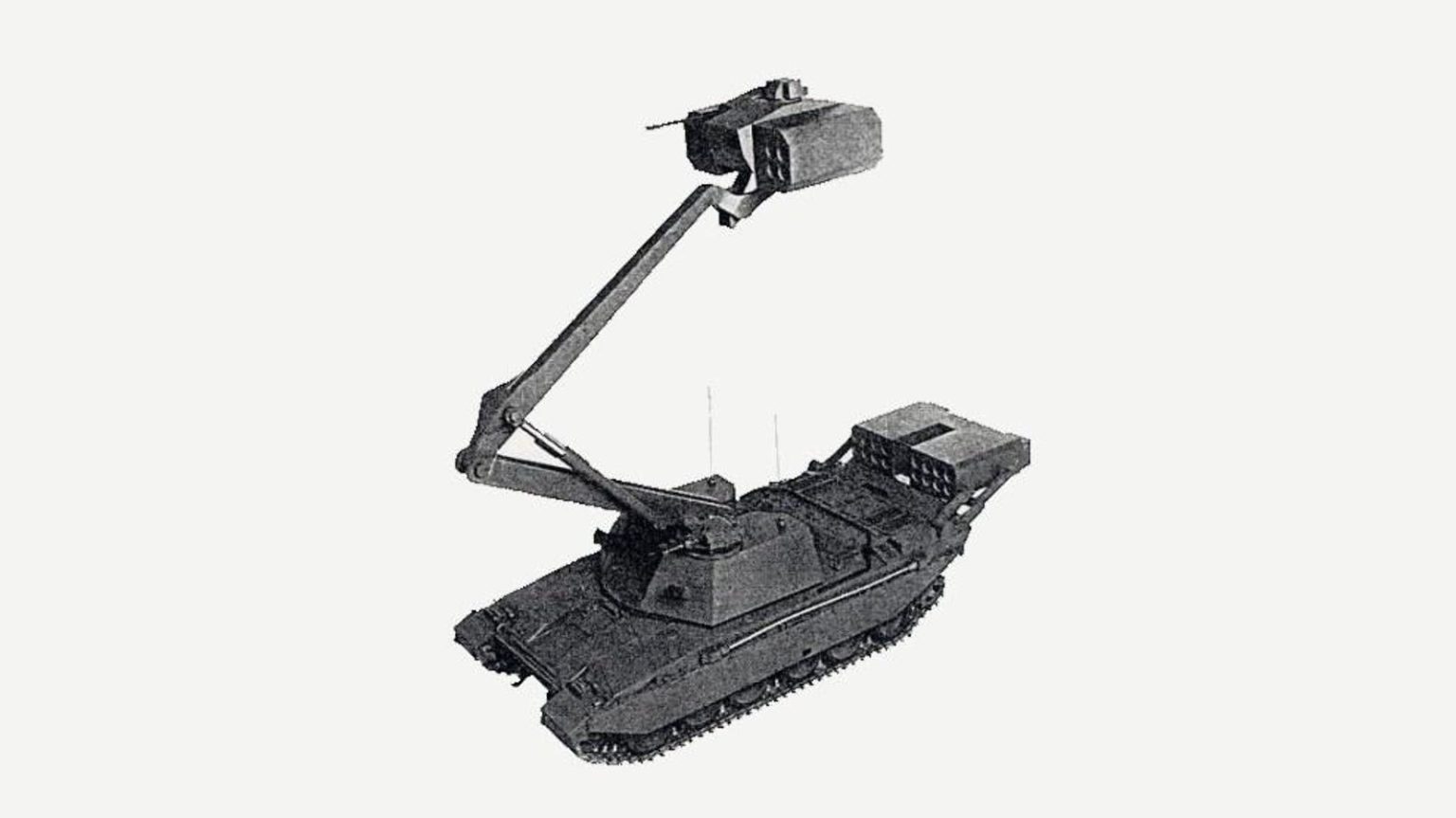A video depicting a Russian anti-tank missile system mounted to the telescoping crane arm of a construction or maintenance vehicle might inspire deja vu among military historians.
Armies have tried this sort of thing before, and for a good reason. The principle—elevate your weapon so it can fire over trees, hills and other obstacles—is a sound one.
The only problems are stability, time and cost.
Lacking a purpose-built crane-weapon, the Russians improvised. The video that circulated online this weekend depicts a civilian bucket-crane, parked in the woods presumably somewhere in Russian-occupied Ukraine, its tall arm elevated into the tree canopy—and an anti-tank guided missile fixed to its bucket.
The do-it-yourself elevated weapon could give the ATGM operator, who would sit in the bucket with their missile, a clear line of sight over the forest onto a target, potentially miles away.
When it comes to ATGMs, line of sight is everything. Most anti-tank missiles are guided by laser, radio or direct commands relayed via a wire that unspools from the back of the missile. Not only does the missile need a clear path to its target, the operator needs to see both the missile and the target in order to complete an attack.
Raising the ATGM firing platform can make a huge difference. Consider the U.S. Army’s M-2 fighting vehicle, which sports on its turret a twin launcher for TOW wire-guided anti-tank missiles. Ten feet from tracks to turret, the M-2 is tall for a combat vehicle—a foot taller than an M-1 tank is. The extra height makes the M-2 an excellent missile platform.
This was evident in 1991, when U.S. Army M-2s clashed with Iraqi MTLB armored tractors in dusty conditions at the Battle of 73 Easting. “Keep in mind the Bradley fighting vehicle’s ‘doghouse’ for its thermal sight is about 13 inches higher than the M-1’s,” Gary Bloedorn, an analyst with the Institute for Defense Analyses, wrote in a 1992 study of 73 Easting.
“So the Bradleys could see these MTLBs through this [dusty] stuff at longer ranges and pick them up quicker, and the TOW missiles were dead reliable,” Bloedorn added. “When they fired the TOWs, they went where they shot them.”
If an extra foot of elevation made a difference for an ATGM-shooter in 1991, imagine how much difference 50 feet might make in 2023. The Russian missile-crane might be awkward, but it’s answering a sound tactical impulse.
So sound that vehicle-makers for decades have tried, and tried again, to develop military-grade weapons-cranes. During World War II, the British Army built a prototype crane-vehicle called the Praying Mantis that combined the tracked hull of a Universal Carrier with a two-person telescoping turret with a gun mount on the end.
The gunners in essence fought from inside the arm of the crane. “The vehicle was designed to shoot over walls and other obstacles while staying as concealed as possible,” according to Tank Encyclopedia.
The Praying Mantis was ungainly, and never advanced past the prototype stage. “The controls were extremely hard to use,” Tank Encyclopedia noted. “The effect on the crew was also not ideal, as many recounted the swaying of the moving vehicle gave them motion sickness.”
Undeterred, German designers later attempted to improve on the concept. In the 1970s, German industry developed the Panther tank-destroyer—in essence, a Leopard 1 tank chassis armed with remotely-fired anti-tank missiles fixed to a 60-foot telescoping mast.
“Ultimately the concept was abandoned for a variety of reasons—stability of the platform while guiding a missile … the time required to set up and abandon a firing position … and ultimately the overall negative cost-benefit ratio,” a user at the Secret Projects forum recalled.
If the Russians’ revival of the crane-mounted anti-tank missile has flaws, they’re probably the same flaws that dragged down previous elevated weapons. A tall crane might not be the most stable platform for missile-guidance. The time it takes to deploy and redeploy the crane could expose the missile team to counterbattery fire.
And there’s the cost. A new bucket truck might cost half a million dollars. It’s not exactly an expendable vehicle—nor one that’s easy to come by in a war zone.
Read the full article here





